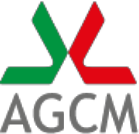CESARE FREMURA-ASSOLOGISTICA/FERROVIE DELLO STATO
PRESS RELEASE
PRESS RELEASE
The Authority has found Ferrovie dello Stato liable for abuse of dominant position
The Competition Authority, at its meeting on 24 February 2000 resolved that Ferrovie dello Stato had abused its dominant position on the rail transport market by discriminating in favour of its own subsidiaries, such as ITALCONTAINER and CEMAT, which operate, respectively, on the intermodal container transport market and bimodal movable crates market. The intermodal container transport and the bimodal mobile crates transport markets relate to point-to-point long haul freight transport. In order to be able to transport by sea, containers are more rubustly built and are usually smaller than the mobile crates.
Because of their peculiar features, both types of transport differ from other forms of freight transport by the fact that they optimize the use of several modes of transport based on the specific features of each and on the capacity to ensure the most efficient organization possible of the combination of different routes, minimizing the time taken for transhipment between one and another system.
More specifically, container transport begins and ends in a harbour terminal and is therefore for point-to-point freight transport by sea, road and rail. Conversely, transport and mobile crates are only used for point-to-point transport within the country (from one intermodal terminal to another) using the combination of road and rail transport.
In view of the serious nature of the offence, the Authority imposed a fine of approximately 6.3 billion lire on Ferrovie dello Stato.
More specifically, the anti-competitive conduct consisted firstly of setting a system of charges for the sale of transport services to operators working on the container and mobile crate transport markets and making amendments to these in the period 1995-99. The investigation also ascertained that the charge system was applied specifically to favour ITALCONTAINER and CEMAT, on their respective markets, and that the latter company was given an unjustified advantage in that it was entrusted with the management of most of the terminals belonging to Ferrovie dello Stato on highly favourable terms and conditions.
The structure of the tariffs charged had no justification in terms of efficiency, and created discrimination during the period investigated by permitting ITALCONTAINER, whose share of rail transport rose from 25 to 44 percent, to fully exploit the rise in the container transport market to the detriment of its competitors, whose position remained virtually unchanged or in steep decline in terms of the number of trains used. Some of the competitors, moreover, were forced to become ITALCONTAINER's customers in order to be able to benefit at least in part from the privileges granted to the company.
On the mobile crate transport market, the anti-competitive conduct practised by Ferrovie dello Stato prevented any form whatsoever of potential or actual competition, thereby contributing to maintaining what was essentially a monopoly market.
The restrictions imposed by Ferrovie dello Stato were particularly serious because they were designed to enable it to use its market strength as a statutory monopoly-holder to restrict competition on markets over which it had not been granted monopoly status.
This was compounded by the fact that the offences were very largely similar to, and in many respects more serious than, those against which the Authority had previously warned Ferrovie dello Stato in an earlier proceeding that was completed in 1993.
Taking all this into consideration, the Authority decided to impose a fine on Ferrovie dello Stato in the amount of 3.5% of its turnover from the sale of railway transport services to combined transport market operators.
Rome, 8 March 2000.

